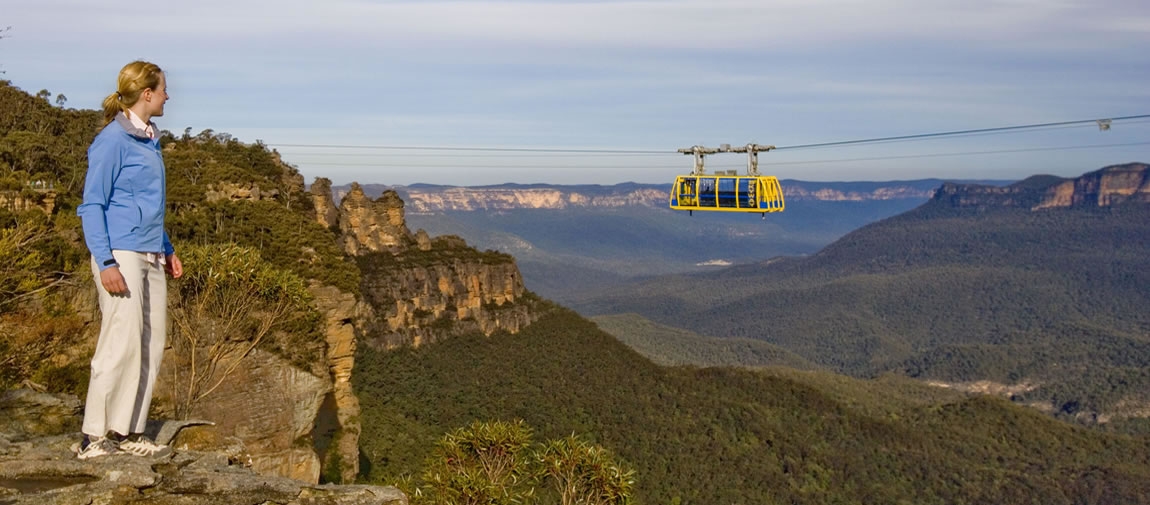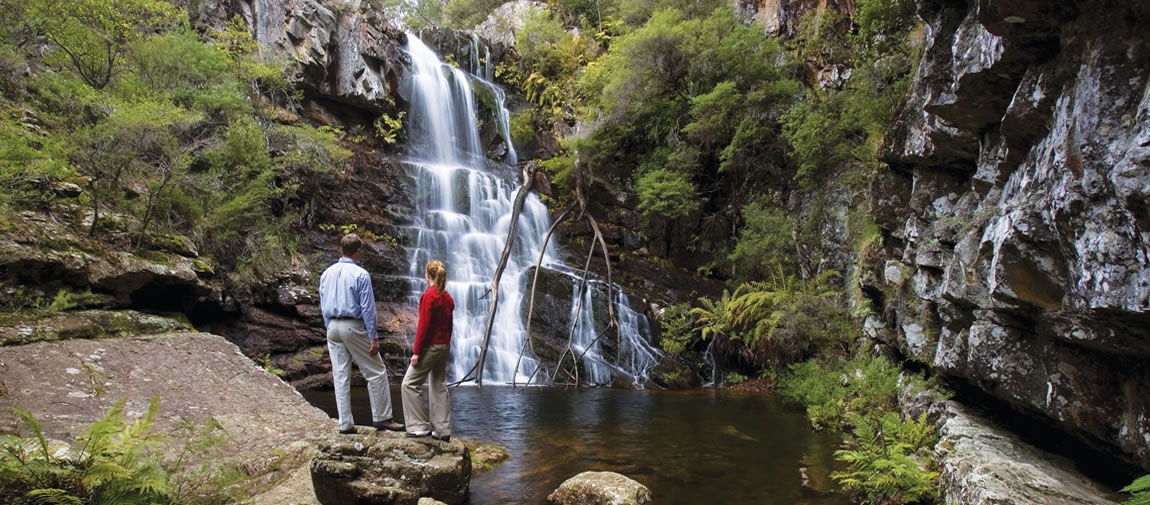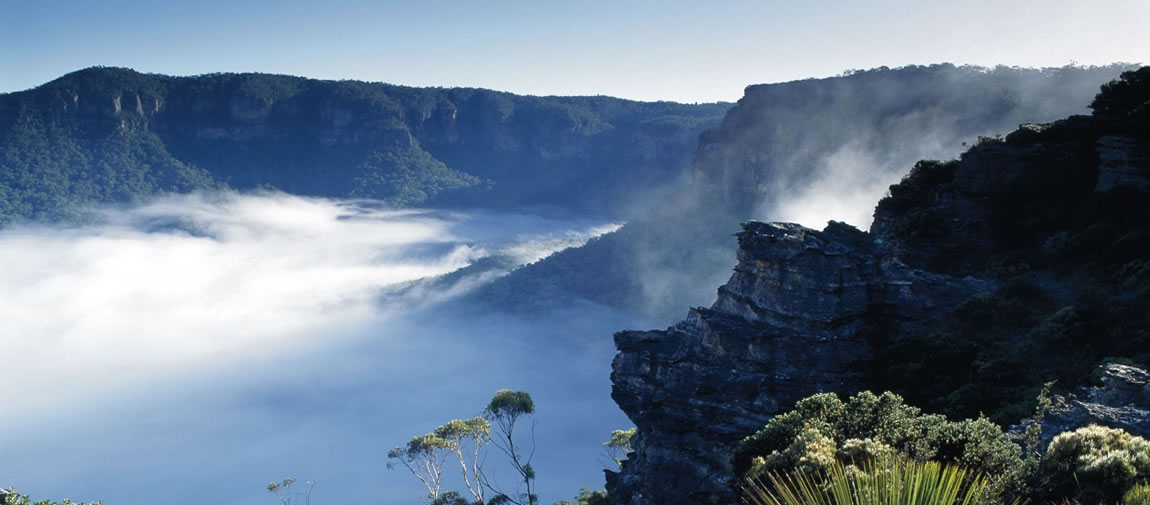Ten times older than the United States’ Grand Canyon, the Blue Mountains are so-called for the mysterious haze they give off. Here's why we think you have to visit this remarkable landmark when you travel to New South Wales.
Quick facts
Best for: Misty blue mountain views
Close to: Two hours’ drive from Sydney
Key sight: Three Sisters
Landscape: Canyons, waterfalls and rock formations
Blue Mountains' activities

One of the best ways to get around the Blue Mountains National Park is on two wheels. The cycling tours here range from the simple Blackheath tour to the more demanding McMahon’s Point ride. On the former you’ll see Govetts Leap and Perrys Lookdown, while along McMahan’s Point to Wentworth Falls you’ll have great views of the reservoir that supplies Sydney’s water.
To enjoy the sights without needing to break into a sweat, head to Scenic World at Katoomba, where there’s a skyway, railway or cable car to enjoy panoramic vistas of the national park. Driving routes also take in every angle of the Blue Mountains.
Blue Mountains' wildlife
They’re called the Blue Mountains for a reason. With the many eucalypt species here, the droplets of oil produced by the trees mixes with the sunlight to coat the horizon with its iconic blue haze. Several endemic species of flora and fauna survive in this habitat, including 12 types of eucalypt present only in the Sydney Basin.
The animals that live in the Blue Mountains include everything from spiders and insects, to hundreds of species of bird and marsupials. Some of the most common creatures you could encounter at this national park are kangaroos, the satin bowerbird and the tiger quoll.
Blue Mountains' hiking

With 140 kilometres of walking trails and tracks this part of the world is a hiker’s dream. The walks, as with most places in Australia, range from easy to difficult, so decide what you want to see, pick a track and explore.
One of our favourite shorter tracks is the walk to the Three Sisters. This unique rock formation is probably the most famous sight in the national park and this walk takes you right up to it. For a slightly longer adventure with bird watching and beautiful wildflowers the clifftop trek between Covetts Leap and Evans Lookout is perfect.
Blue Mountains' geology
The high point of the Blue Mountains is a 1,100 metre-high sandstone plateau. The landscape shifts from massive cliffs and rainforested gullies to sandstone canyons. Within all of this are waterfalls and gorges, and with so many differing views there's plenty to take in, whichever part of the national park you visit.
Blue Mountains' history
This area of New South Wales is surrounded by Aboriginal culture. The indigenous people have lived in the Blue Mountains for tens of thousands of years and you can learn about them at the Greater Blue Mountains World Heritage Area.



